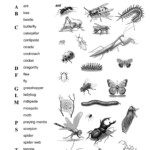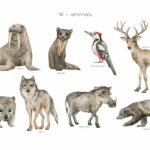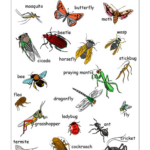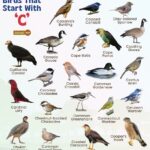What Animals Start With W
1. Wallaby
2. Wasp
3. Warthog
4. Weasel
5. Whale
6. Wombat
7. Wolf
8. Wolverine
9. Woodpecker
10. Walrus
11. Warbler
12. Weaver bird
13. Whip-tailed lizard
14. White rhinoceros
15. Wildebeest
16. Wildcat
17. Water buffalo
18. Waxwing
19. Weevil
20. Whip spider
21. White-tailed deer
22. Wisent
23. Wolf spider
24. Wren
25. Wryneck
26. Weaver ant
27. Water monitor
28. Whip scorpion
29. Whitetail jackrabbit
30. Wolf eel
More About What Animals Start With W
Welcome to a captivating journey into the marvelous world of animals starting with the letter “W”! From the majestic and powerful to the quirky and unusual, this collection explores the diverse range of creatures that share our planet. Embark on an exciting exploration as we uncover fascinating details about these unique beings, presented exclusively for our cherished blog readers and website users.
Let us begin our expedition with one of the most iconic animals starting with “W”, the wolf. Revered for their intelligence, strength, and social nature, wolves have long captivated our collective imagination. These remarkable creatures are renowned for their tight-knit family bonds and efficient hunting techniques, relying on intricate communication systems and cooperative strategies to succeed in their pack ventures.
Venturing into the oceans, we come across the wondrous world of whales. These magnificent marine mammals effortlessly command the vastness of the seas. Whales, including species such as the blue whale, humpback whale, and killer whale, capture our hearts with their graceful movements and haunting songs. They navigate great distances as they migrate, undertaking epic journeys, while their sheer size leaves us in awe.
Wandering into the realm of venomous wildlife, we encounter the wily and lethal western diamondback rattlesnake. Found in various habitats across North America, this notorious snake possesses a rattle on its tail, which warns predators and potential threats of its presence. With exceptional camouflage and an effective venomous bite, they exemplify the intricate balance between beauty and danger in the animal kingdom.
As our expedition takes an aerial turn, we are greeted by the whimsical woodpeckers. These charming birds showcase remarkable adaptations, including specially evolved beaks and strong neck muscles, allowing them to peck at wood with impressive speed and precision. Their incessant drumming, often signaled by a distinct rhythmic tapping sound, serves various purposes, including communication, marking territory, and searching for insects.
Heading into the wilds of Africa, we encounter the endangered white rhinoceros, one of the largest land mammals in existence. Despite the misleading name, white rhinos are actually gray in color and possess a wide mouth, enabling them to graze on grasses. Tragically, they face the grim threat of poaching due to the illicit demand for their horns, believed to possess medicinal properties in some cultures.
In the watery realms, we find the peculiar walrus, a massive marine mammal notable for its long tusks, bulkiness, and distinctive mustache-like whiskers. With blubbery bodies and strong flippers, walruses are well-adapted to their Arctic habitat, often relying on sea ice platforms for rest and breeding. These fascinating creatures are part of a delicate Arctic ecosystem and offer a poignant reminder of the importance of conserving our planet’s fragile environments.
Our journey finally leads us to explore the intricate world of insects with the wondrous walking stick. These fascinating critters, also known as stick insects or phasmids, are masters of camouflage, closely resembling twigs or sticks to blend seamlessly with their surroundings. With a diverse range of species spread across the globe, walking sticks display a remarkable level of mimicry, showcasing the brilliance of evolution.
With these mere glimpses into the captivating lives of animals starting with “W,” we hope to ignite your curiosity and deepen your appreciation for the astonishing diversity of the natural world. Join us in our upcoming articles as we delve further into the intriguing characteristics, habitats, and conservation efforts related to these remarkable creatures. These exclusive insights are our way of expressing gratitude to our loyal readers and website visitors, as we strive to provide engaging and informative content that fuels your passion for wildlife and promotes a deeper connection to all of Earth’s inhabitants.
What Animals Start With W FAQs:
1. Q: What animals start with the letter “W”?
A: Some animals that begin with “W” include the walrus, warthog, weasel, wombat, wolf, whale, water buffalo, wildebeest, wallaby, and white rhinoceros.
2. Q: Where can walruses be found?
A: Walruses are primarily found in the Arctic, along the coasts of the Northern Hemisphere.
3. Q: Are warthogs dangerous animals?
A: Warthogs are generally not considered dangerous unless they feel threatened. They may charge if they sense danger, but they generally prefer to flee rather than attack.
4. Q: How fast can a weasel run?
A: Weasels are known for their agility and ability to move quickly. While their speed can vary slightly, they can typically run at speeds of up to 10-12 miles per hour.
5. Q: What do wombats eat?
A: Wombats are herbivores and primarily feed on grass, roots, bark, and other vegetation.
6. Q: Are wolves a social species?
A: Yes, wolves are highly social animals and typically live in packs. They engage in cooperative hunting, raising their young together, and maintaining a hierarchical pack structure.
7. Q: How long can whales hold their breath underwater?
A: The duration varies based on the type of whale, but some species, such as sperm whales, can hold their breath for up to 90 minutes.
8. Q: What is unique about water buffaloes?
A: Water buffaloes are considered domesticated animals with great strength. They are typically used as work animals in agriculture and are excellent swimmers.
9. Q: Where can wildebeests be found in the wild?
A: Wildebeests, also known as gnus, are native to the grasslands and savannas of Africa, particularly in countries like Kenya and Tanzania.
10. Q: How much does a white rhinoceros weigh?
A: White rhinoceros is one of the largest land mammals. They can weigh anywhere between 2,200 to 3,600 kilograms (4,850 to 7,920 pounds).


















